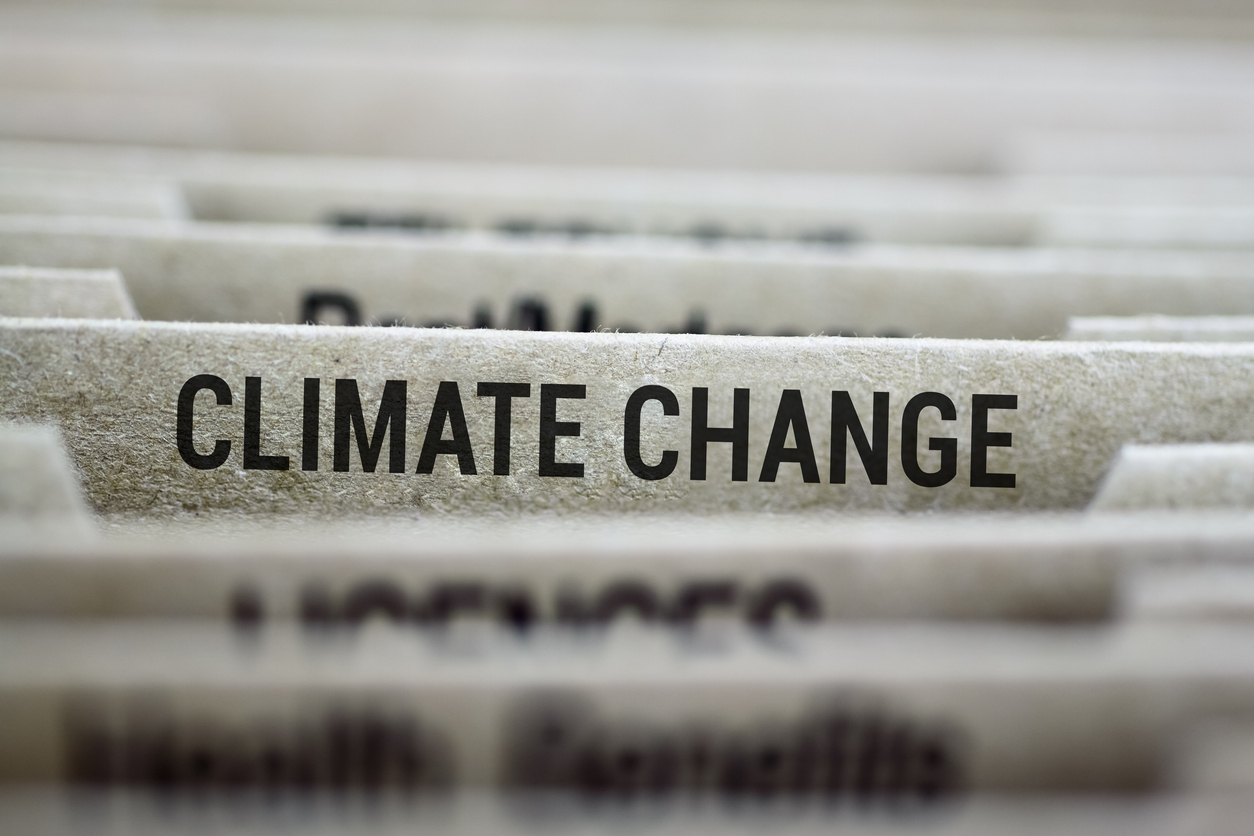Amy Currotto was concerned about adding “climate change” as an important trend to a panel discussion at the Florida Association of Public Insurance Adjusters fall meeting. She thought some in the audience would have emotional and significant responses to her raising the issue. I have been to four other public adjuster conferences this fall, and “climate change” has come up at each of them. For example, at the RAMPIA meeting in Denver, the Colorado Insurance Commissioner indicated that the frequency and severity of wildfires have increased because of climate change, causing new initiatives to help keep insurance available and affordable.
The insurance industry is quite transparent about climate change having a significant impact on its business and underwriting. Changing risks of loss caused by climate-driven weather patterns is studied by newer technologies and then reflect decisions about insurance rates and where insurance companies will make their products available.
An article published in the Insurance Journal, Risky Business: Climate Change Turns Up Heat on Insurers, Policyholders, stated that:
There are thousands of homeowners and businesses from California to Australia in a similar position [not being able to find insurance cover] because the insurance industry, known for its readiness to cover anything from Bruce Springsteen’s vocal chords [sic] to alien abductions, has trouble factoring in climate change.
The tried and tested approach, where decades’ worth of historical data serve to estimate future claims, falls short when weather patterns change and hurricanes, floods, heat waves or snowstorms become more extreme and unpredictable, industry experts say. And the British hosts of the U.N. climate conference in Glasgow acknowledged on Wednesday that current pledges to cut greenhouse gases were not enough to avert climate catastrophe.
…‘Insurers are pulling out because nobody wants to be in the business of losing money,’ says Attila Toth, chief executive at specialist risk analytics firm Zesty.ai. ‘And if they don’t trust their traditional models, then they are concerned that they will be losing money.’
Insurers are increasingly using more sophisticated methods to track and determine the impact of climate change on risks they insure. For example, in a 2020 study, Catastrophe Modeling and Climate Change by Lloyd’s, its executive summary stated:
Scientific research points conclusively to the existence of climate change driven by human activity. Nevertheless, significant uncertainty remains on the nature and extent of the changes to our climate and the specific impacts this will generate. Many of the effects will become apparent over the coming decades and anticipating them will require forward projections, not solely historical data.
Changes in the climate and weather patterns have the potential to affect extreme weather events. Insurers have a key interest in understanding the impact of climate change on the frequency of extreme weather events. The frequency of heat waves has increased in Europe, Asia and Australia and more regions show an increase in the number of heavy precipitation events than a decrease. It is virtually certain that since the 1970s there has been an increase in the frequency and intensity of the strongest tropical cyclones in the North Atlantic basin.
Catastrophe modeling technology is now used extensively by insurers, reinsurers, governments, capital markets and other financial entities. They are an integral part of any organisation that deals with natural catastrophe risk and are used most commonly to perform activities such as risk selection and underwriting, reserving and ratemaking, development of mitigation strategies, design of risk transfer mechanisms, exposure and aggregate management, portfolio optimisation, pricing, reinsurance decision-making and capital setting. The models help to quantify our understanding of the natural world.
Climate change trends may be implicitly built into catastrophe models, given the heavy use of historical data in constructing them; however these TRENDS are not necessarily explicitly incorporated into the modelling output. Uncertainties associated with the estimation of the extent and frequency of the most extreme events means that the climate change impact can be difficult to account for in risk models.
The sensitivity of hurricane losses is influenced by a number of factors related to climate change, such as sea-level rise and sea surface temperature. There is a relationship between sea surface temperatures and hurricane strength which suggests a gradual increasing trend. It is thus imperative that changes in these are modelled accurately.
The approximately 20 centimetres of sea-level rise at the southern tip of Manhattan Island increased SUPERSTORM Sandy’s surge losses by 30% in New York alone. Further increases in sea- level in this region may non-linearly increase the loss potential from similar storms. Catastrophe models that dynamically model surge based on current mean sea-level already factor this increased risk into their projections.
Climate models continue to project impacts on extreme weather in the coming decades. EQECAT show how future climate scenarios could see increases in the frequency of intense storms in Europe, with a possible shift in storm track towards northern latitudes. JBA notes that climate change has already increased the probability of flood events in the UK such as those which occurred in 2000, and a 1 in 5 rainfall event could be 40% larger in future.”
Those models use artificial intelligence and visual satellite observation to quickly capture loss data, which feeds into actuarial and underwriting analysis to a region and location-specific risk. RMS noted that this technology on its website:
A critical element in reducing that uncertainty, removing those assumptions and enhancing risk understanding is combining location-level data and hazard information. That combination provides the data basis for quantifying risk in a systematic way.
Understanding the direct correlation between risk or hazard and exposure requires location-level data. The potential damage caused to a location by flood, earthquake or wind will be significantly influenced by factors such as first-floor elevation of a building, distance to fault lines or underlying soil conditions through to the quality of local building codes and structural resilience. And much of that granular data is now available and relatively easy to access.
…
‘Within two days of Hurricane Laura striking Louisiana at the end of August 2020,’ says Rahnama, ‘we had been able to assess roof damage to over 180,000 properties by applying our machine-learning capabilities to satellite images of the affected areas. We have ‘trained’ our algorithms to understand damage degree variations and can then superimpose wind speed and event footprint specifics to group the damage degrees into different wind speed ranges. What that also meant was that when Hurricane Delta struck the same region weeks later, we were able to see where damage from these two events overlapped.’
From a positive standpoint, measures to reduce and mitigate loss in advance of catastrophes can be better studied and implemented. From a negative standpoint, the pooling of similar risks of loss seems to be more of what insurers did in the past, as they can now assess risk more on an individual basis. This leads to “cherry picking” some policyholders and abandoning others to government-backed risk pools. Policies with broader coverage grants will be provided to those least at risk and narrow coverage to others. Thus, the problems of coverage gaps, which I discussed yesterday in State Farm New Policy Filing In California Should Be Concerning To All In the Property Insurance Industry—An Example Is the New Appraisal Language, may increase as these more sophisticated models are merged with machine-made underwriting.
The bottom-line effect for those in the field dealing with policyholders is significant. For insurance agents, coverages will continue to change frequently, and you will have to study policy forms much more than in the past. You will have many facing increasing premiums while others may have little choice in the type of insurer who will provide coverage at any price. You will have customers with significant coverage gaps as policy forms will have more “choices” to opt to accept what used to be standard all-risk replacement cost insurance.
For property adjusters, coverages will vary significantly between forms even within the same insurer. Policyholders looking to afford coverage may purchase “cheap” insurance with significant gaps in coverage. Deductibles will rise as policyholders in risk-prone areas try to find ways to pay for required insurance. As a result of increasing premiums and current construction increases, some may not write insurance to value to keep premiums lower, and co-insurance penalties will be a raging topic. Policyholders without mortgages will be tempted to go bare.
Restoration contractors will increasingly find that the insurance bought to pay for losses will only partially do so. Policyholders will need loans to finance what insurance used to pay. Immediate repairs may only be made to the most critical areas of structures until the means to finance replacement are found.
This sounds so negative for a Friday blog.
Thought For The Day
Climate change is moving faster than we are, but we don’t give up because we know that climate action is the only path.
—Antonio Guterres




